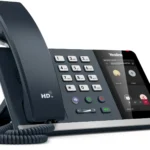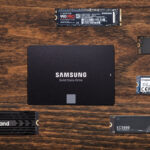5 Best Travel Power Banks in Kenya: Your Complete 2025 Buying Guide

Look, here’s the truth: Your phone dies at the worst possible times. Right when you need to confirm that M-Pesa payment. Right when the Uber driver is calling. Right when you’re trying to show your vaccination certificate at the airport.
If you’ve been burned by a dead battery when it mattered most, this guide is for you.
Why This Product Matters for You
The Real Cost of a Dead Phone in Kenya:
- Miss that client call? You just lost that deal.
- Can’t access M-Pesa? Your taxi driver isn’t happy waiting.
- Phone dies during a power cut? You’re sitting in the dark with no way to reach anyone.
Travel power banks aren’t luxury items anymore—they’re survival tools. Whether you’re a business owner hustling between meetings in Nairobi, a student pulling all-nighters at university, or a safari guide showing tourists around Maasai Mara, a reliable portable charger keeps you connected when it matters most.
Let me show you exactly which power banks deliver real value without emptying your wallet.
What Makes a Travel Power Bank Actually Good?
Before we dive into the top picks, let’s cut through the marketing BS. Here’s what actually matters:
Battery Capacity (mAh) – This is your fuel tank. Higher mAh means more charges:
- 10,000-20,000mAh: Perfect for daily commutes and weekend trips (2-4 phone charges)
- 20,000-30,000mAh: Ideal for long travel days and multiple devices (4-6 phone charges)
- 30,000mAh+: Overkill for most people, but great for safari guides and field workers
Fast Charging Technology – Nobody has time to wait 5 hours for a full charge:
- Look for Quick Charge (QC) or Power Delivery (PD) support
- Minimum 18W output for decent speed (30W+ is better)
- Fast input charging means your power bank itself charges quickly
Build Quality – Cheap plastic breaks. Period:
- Metal or reinforced polymer casing survives drops
- LED indicators show remaining battery
- Multiple ports let you charge phone + earbuds simultaneously
Portability vs. Capacity – This is the real trade-off:
- Bigger battery = heavier weight
- Choose based on your actual travel patterns
- For flights: Max 27,000mAh allowed in carry-on luggage
Now let’s look at the actual products you should consider.
Read also: Best Power Bank for Laptops in Kenya: Complete Buying Guide
The 5 Best Travel Power Banks in Kenya (2025)
1. Anker PowerCore 20100mAh – The Reliable Workhorse
Price: KSh 5,000 – 6,000
Best For: Professionals, frequent travelers, anyone who values reliability
Why It Wins: This is the Toyota Corolla of power banks. Not the flashiest, but it shows up when you need it. The PowerCore 20100 delivers 4-6 full phone charges with Anker’s PowerIQ technology that optimizes charging speed for your specific device.
Real-World Performance:
- Charged an iPhone 13 from 0% to 100% in under 2 hours
- Survived a 12-hour Nairobi to Kisumu bus ride while charging phone and tablet
- Still had 30% battery left after charging two devices
Key Specs:
- 20,100mAh capacity
- Dual USB ports (charge two devices)
- PowerIQ fast charging technology
- Compact design despite high capacity
- 18-month warranty
The Downside: Slightly heavier than cheaper alternatives (356g), but that’s because it uses quality battery cells that actually deliver the advertised capacity.
Who Should Buy: If you travel regularly for work, take long road trips, or just want something that won’t die on you in 6 months, this is your pick.
Explore premium charging solutions at Minify
2. Oraimo Traveler 4 Pro 20000mAh – The Budget Champion
Price: KSh 2,500 – 3,300
Best For: Students, budget-conscious buyers, anyone who needs solid performance without premium pricing
Why It’s a Steal: Oraimo is Kenya’s sweetheart brand for good reason. The Traveler 4 Pro gives you 20,000mAh of capacity, fast charging, and built-in cables—all for the price of dinner at Java.
What Makes It Special:
- Built-in charging cables mean you never forget your charging cord at home
- LED torch with SOS feature for emergencies (perfect for power cuts)
- 3 built-in cables + 1 USB port = charge 4 devices at once
- 2.4A fast charging keeps things moving
Real User Story: A mobile salon owner charges her phone, speaker, and clippers all day on one charge. She runs her side hustle without ever worrying about finding a power outlet.
The Trade-off: Not as fast as premium models, but for this price? Absolutely worth it.
Who Should Buy: Students on tight budgets, side hustlers who need all-day power, anyone who loses charging cables constantly.
3. Xiaomi Mi Power Bank 3 20000mAh – The Sleek Performer
Price: KSh 3,500 – 4,500
Best For: Tech enthusiasts, travelers who want style + substance
The Xiaomi Difference: Premium aluminum build. Two-way 18W fast charging. USB-C compatibility. This isn’t just a power bank—it’s a statement.
Why Tech Reviewers Love It:
- Charges itself from 0% to full in under 4 hours
- Dual USB-A + USB-C ports
- Low-current mode for charging Bluetooth earbuds
- Sleek design that actually looks good
Performance Numbers:
- Charged Samsung Galaxy S21 to 50% in 30 minutes
- Powered through 5 consecutive phone charges
- USB-C PD means it charges modern phones at maximum speed
The Catch: More expensive than Oraimo, but you’re paying for build quality that lasts years, not months.
Who Should Buy: If you own flagship phones (iPhone, Samsung Galaxy, Google Pixel) and want charging speeds that match your device’s capabilities.
4. Romoss Sense 8+ 30000mAh – The Heavy-Duty Tank
Price: KSh 4,000 – 5,500
Best For: Safari guides, field workers, anyone who spends days away from power outlets
Pure Charging Power: 30,000mAh is massive. This thing charges multiple devices for days. If you’re a wildlife photographer in Tsavo, a field researcher in rural Kenya, or just someone who camps frequently, this is your insurance policy.
What You Get:
- 6-8 full smartphone charges
- Multiple output ports (charge phone + tablet + camera simultaneously)
- Built to handle rough conditions
- LED display shows exact battery percentage
Real-World Use Case: Perfect for:
- Safari tour guides who need phones + tablets + cameras charged all day
- University students during exam week (library power outlets are always taken)
- Field officers working in areas with unreliable electricity
The Downside: Heavy (650g). But if you need this much capacity, you’re probably carrying a backpack anyway.
Who Should Buy: Heavy device users, outdoor professionals, anyone who genuinely needs multi-day backup power.
5. Samsung 10000mAh Fast Charge Power Bank – The Compact Commuter
Price: KSh 3,000 – 4,000
Best For: Daily commuters, light travelers, anyone who wants pocket-friendly backup
Small But Mighty: 10,000mAh is the sweet spot for everyday carry. Fits in your pocket. Light enough to forget it’s there. Still gives you 2-3 full charges for your phone.
Samsung Quality Means:
- Over-voltage protection (won’t fry your phone)
- Over-current protection (shuts down if something goes wrong)
- Recharges in 220 minutes
- Available in silver and pink
Perfect For:
- Daily commute to work (Thika Road traffic won’t kill your battery)
- Nights out (social media scrolling protected)
- Backup for meetings (never miss that important call)
The Limitation: Only 2-3 phone charges. If you need more, look at the 20,000mAh options above.
Who Should Buy: If you just need reliable backup for everyday situations and don’t want to carry a brick in your pocket.
Browse all power bank options and charging accessories
Comparison Table: Which One Is Right for You?
| Power Bank | Capacity | Price Range | Charges (iPhone) | Best Use Case |
|---|---|---|---|---|
| Anker PowerCore | 20,100mAh | KSh 5,000-6,000 | 4-6 times | Business travel, reliability |
| Oraimo Traveler 4 Pro | 20,000mAh | KSh 2,500-3,300 | 4-5 times | Budget buyers, built-in cables |
| Xiaomi Mi 3 | 20,000mAh | KSh 3,500-4,500 | 4-5 times | Tech enthusiasts, style |
| Romoss Sense 8+ | 30,000mAh | KSh 4,000-5,500 | 6-8 times | Heavy users, outdoor work |
| Samsung 10K | 10,000mAh | KSh 3,000-4,000 | 2-3 times | Daily commute, pocket carry |
How to Choose: Your Decision Framework
Ask yourself these 3 questions:
1. How often will you use it?
- Daily commuter: 10,000mAh is enough
- Business traveler: 20,000mAh gives peace of mind
- Field worker/guide: 30,000mAh is necessary
2. What’s your budget?
- Under KSh 3,500: Oraimo Traveler 4 Pro (incredible value)
- KSh 3,500-5,000: Xiaomi Mi or Samsung (balanced performance)
- KSh 5,000+: Anker PowerCore (premium reliability)
3. What devices will you charge?
- Just your phone: Any 10,000-20,000mAh works
- Phone + earbuds/tablet: Get 20,000mAh with multiple ports
- Multiple devices daily: Go for 30,000mAh with 3+ ports
Read also: Safaricom Power Bank Prices (Updated)
Common Questions Answered (People Also Ask)
How many times can a 20000mAh power bank charge my phone?
Depends on your phone’s battery. Most modern smartphones have 3,000-4,000mAh batteries. A quality 20,000mAh power bank delivers about 12,000-14,000mAh actual output (due to conversion loss). That’s 3-4 full charges for most phones, 4-5 charges for older phones with smaller batteries.
Can I take a power bank on a plane in Kenya?
Yes, but only in carry-on luggage, never checked bags. Maximum allowed capacity is 27,000mAh (100Wh) without special permission. All the power banks in this guide are flight-approved for domestic and international travel from Kenya.
How long does it take to charge the power bank itself?
With fast charging (18W+ input):
- 10,000mAh: 3-4 hours
- 20,000mAh: 5-7 hours
- 30,000mAh: 8-10 hours
Pro tip: Charge your power bank overnight, so it’s ready when you need it.
Will a power bank damage my phone?
Quality brands like Anker, Samsung, Xiaomi, and Oraimo have built-in safety features:
- Over-voltage protection: Prevents too much power
- Over-current protection: Stops if something goes wrong
- Temperature control: Prevents overheating
Cheap knockoff brands? That’s a gamble. Stick to reputable brands sold by authorized dealers.
How long do power banks last?
Quality power banks last 2-3 years with proper care (300-500 charge cycles). Budget options might last 6-12 months. Signs it’s dying: charges slower, doesn’t hold full capacity, overheats.
What’s the difference between Quick Charge and Power Delivery?
Both are fast charging technologies:
- Quick Charge (QC): Mostly for Android devices
- Power Delivery (PD): Universal standard, works with iPhones, Android, laptops
Look for PD support if you have multiple device types. QC works if you’re Android-only.
Where to Buy in Kenya (Authorized Dealers)
Online (Fast Delivery):
- Minify Solutions – Premium selection, reliable delivery
- Jumia Kenya – Wide variety, customer reviews
- Phone Place Kenya – Good prices, Nairobi same-day delivery
Physical Stores (Nairobi):
- Samsung stores – For Samsung power banks
- MobileHub Kenya – Multiple brands
- Almiria Techstore – Orders before 2 PM ship same day
What to Check Before Buying: ✓ Official warranty card included
✓ Sealed packaging (no opened boxes)
✓ Match model number with official specs
✓ Compare prices across 2-3 sellers
✓ Read recent customer reviews
The 3 Biggest Mistakes People Make
Mistake #1: Buying Based on Price Alone
That KSh 1,000 “50,000mAh” power bank on Instagram? It’s fake. Physics doesn’t work that way. Real 20,000mAh power banks from quality brands cost at least KSh 2,500. If it seems too cheap, it’s either fake capacity or will die in 3 months.
Mistake #2: Buying Too Small to Save Money
Getting a 5,000mAh power bank to save KSh 1,000 is penny-wise, pound-foolish. You’ll barely get one charge, then you’ll buy another power bank anyway. Start with at least 10,000mAh.
Mistake #3: Ignoring Charging Speed
A power bank that takes 12 hours to charge itself is useless. Always check input charging speed. Look for 18W+ input or you’ll be waiting forever.
Pro Tips for Maximum Power Bank Life
Make Your Power Bank Last Longer:
- Store at 40-60% charge when not using for weeks (not full, not empty)
- Avoid extreme temperatures (don’t leave in direct sunlight or freezing cold)
- Use quality charging cables (cheap cables waste power and charge slower)
- Recharge before it hits 0% (completely draining reduces battery life)
- Clean the ports occasionally (dust causes poor connections)
Final Verdict: Which One Should You Buy?
Best Overall: Anker PowerCore 20100mAh
→ If you want reliability and can spend KSh 5,000-6,000, this is the gold standard.
Best Budget Pick: Oraimo Traveler 4 Pro 20000mAh
→ Insane value at KSh 2,500-3,300. Built-in cables are a game-changer.
Best for Style + Performance: Xiaomi Mi Power Bank 3
→ Premium feel, fast charging, USB-C future-proofing. Worth the KSh 3,500-4,500.
Best Heavy-Duty Option: Romoss Sense 8+ 30000mAh
→ For safari guides, field workers, anyone who needs days of backup power.
Best Pocket Carry: Samsung 10000mAh
→ Lightweight, reliable, perfect for daily commuters who just need emergency backup.
Ready to Buy? Here’s What to Do Next
Stop gambling with your phone’s battery life. Pick the power bank that matches your actual needs (not just the cheapest option), buy from an authorized dealer, and never worry about a dead phone again.
Your action plan:
- Choose based on your use case (daily vs. travel vs. heavy-duty)
- Set your budget (but don’t cheap out on something this important)
- Buy from authorized dealers with warranty
- Charge it fully before first use
- Keep it in your bag 24/7
The next time everyone’s phones are dying during a power cut, you’ll be the person they’re asking for a charge. And isn’t that worth KSh 3,000?
Start shopping for reliable power banks at Minify →
Related Resources:
- Tom’s Guide: Best Power Banks for Travel
- TechRadar: Power Bank Buying Guide
- Belkin: TSA Power Bank Rules
- EcoFlow: How to Choose a Power Bank
Last Updated: November 2025 | Prices and availability subject to change
Read also:


 IP Phones & PBX
IP Phones & PBX
 Solid State Drive
Solid State Drive